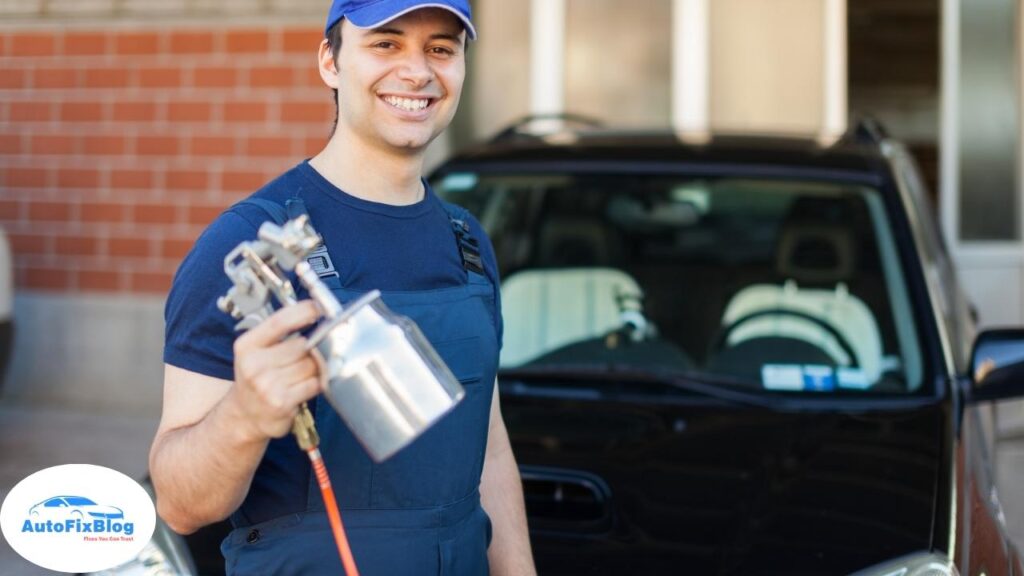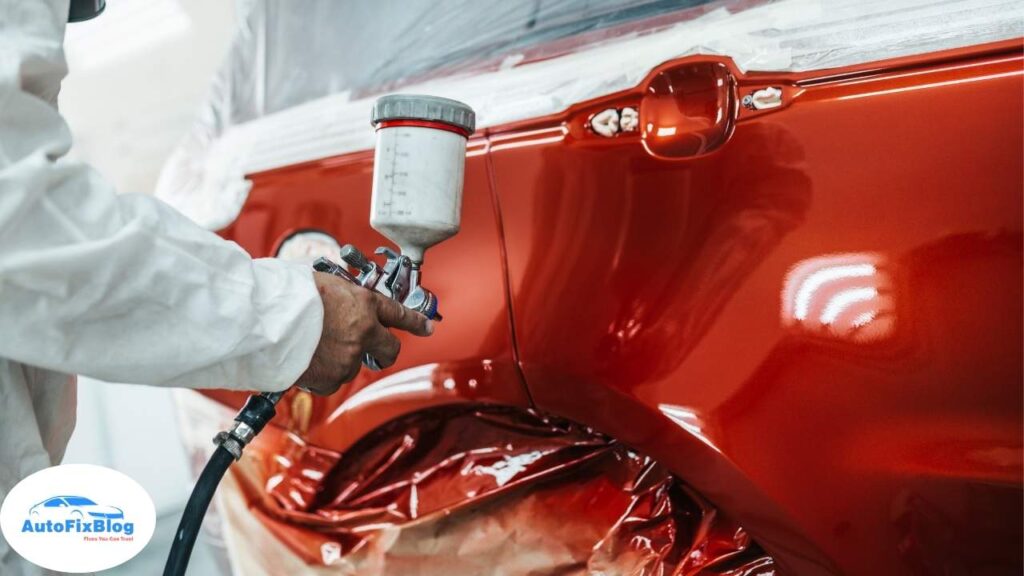Painting a car can refresh its appearance, cover scratches, or enhance its resale value. However, one of the first questions people ask is, how much paint does it take to paint a car?
This depends on several factors, including the size of the vehicle, the type of paint, and the technique used. Whether you’re a DIY enthusiast or planning to hire a professional, understanding the amount of paint required and the painting process can save you time, money, and effort.
In this guide, we’ll explore the factors affecting paint volume, the types of paint available, and tips for achieving a smooth, long-lasting finish. By the end, you’ll have a clearer understanding of how much paint it takes to paint a car and the key considerations in the car painting process.
Factors Influencing How Much Paint Does It Take to Paint a Car
When determining how much paint is needed, several factors come into play:
Vehicle Size: The most obvious factor is the size of the vehicle. Larger vehicles, like trucks and SUVs, will need more paint than smaller vehicles, like compact cars. For instance, a compact car might need around 2-3 quarts of paint, while a larger SUV could require up to 6 quarts.
Number of Coats: Achieving a durable and attractive finish often requires multiple coats, typically including primer, a base coat, and a clear coat. For a basic paint job, you might need at least two coats of each. If you want a more vibrant color or a deeper shine, additional coats may be necessary.
Type of Paint: Different types of paint have different coverages. For example, acrylic paints may require more layers than urethane or enamel paints due to their thickness and coverage. Additionally, metallic or pearl paints may need more coats to achieve an even look.
Spraying Technique: The spraying technique and equipment used also affect paint usage. High-quality spray guns and experienced painters tend to apply paint more evenly and efficiently, while beginners or lower-quality equipment might waste more paint.
Existing Paint Condition: The current state of your car’s paint is crucial. If your car has paint blisters or other imperfections, more paint and preparation work may be needed to achieve a smooth, even finish.

Estimating Paint Quantities by Vehicle Type
Here’s a general breakdown of how much paint you’ll likely need based on vehicle type:
Compact Car (e.g., Honda Civic): Approximately 2-3 quarts for a base coat, plus the same for clear coat and primer.
Mid-Size Car (e.g., Toyota Camry): Around 3-4 quarts of base coat, plus similar amounts for clear coat and primer.
SUVs or Trucks: Expect to use 5-6 quarts of base coat, with an equal amount of clear coat and primer.
These estimates assume you’ll be applying 2-3 coats. If you’re adding additional coats for vibrancy or protection, plan for additional quarts of paint.
Types of Automotive Paint and Their Coverage
Acrylic Lacquer: Known for its high gloss and ease of application, acrylic lacquer is a budget-friendly option, but it may require more paint to achieve full coverage. However, it can be more prone to paint blisters over time, especially in high heat or humid environments, so it’s not ideal for all climates.
Acrylic Enamel: More durable than lacquer, acrylic enamel offers a harder finish and can be a good middle-ground option. However, enamel paints are thicker and may require slightly more paint than lacquer to achieve an even coating.
Urethane: Urethane is durable and resistant to chipping and UV damage, making it an ideal choice for long-term use. It provides excellent coverage, so you may need less urethane paint compared to lacquer or enamel. This paint type is also less likely to develop paint blisters.
Metallic and Pearl Paints: These paints have a unique shine and can enhance the car’s appearance, but they often require additional layers to achieve uniform coverage.
Steps in the Car Painting Process
Achieving a high-quality paint job involves a multi-step process that goes beyond just applying paint. Here’s an outline of the steps typically involved:
Surface Preparation: The car’s surface must be cleaned, sanded, and prepped. This step is crucial to avoid future car issues like uneven paint or poor adhesion. For cars with existing paint blisters or rust, additional sanding and rust treatment may be needed.
Priming: The primer is applied to create a smooth surface for the paint to adhere to and to provide protection against rust. Typically, 1-2 coats of primer are recommended, and it’s essential to let each coat dry before applying the next.
Base Coat Application: The base coat provides the color for the car. Multiple coats (usually 2-3) are applied for an even look, and each coat must dry before applying the next. This is where how much paint does it take to paint a car becomes more relevant, as each coat adds to the overall amount.
Clear Coat: The clear coat acts as a protective layer, enhancing the paint’s shine and safeguarding it from UV rays, dirt, and minor scratches. Clear coat can require 2-3 coats, which will contribute to the total paint needed.
Buffing and Polishing: Once the clear coat has dried, the surface is buffed and polished to a high shine. This final step removes any imperfections and smooths the finish, giving the car a glossy look.
How Much Paint Does It Take to Paint a Car for DIY Projects?
If you’re tackling a DIY car painting project, understanding how much paint you need and the materials required is crucial. DIY projects often require more paint due to potential inefficiencies in technique and equipment.
Calculate Extra Paint: Unlike professionals, beginners tend to use more paint due to overspray or uneven application. Consider purchasing at least an additional quart of base coat and clear coat to account for waste.
Choose a Good Quality Spray Gun: Low-quality spray guns may waste paint, leading to poor coverage and even surface issues like paint blisters. Investing in a reliable spray gun will help distribute paint more efficiently and evenly.
Practice Before Application: If this is your first time painting a car, practice on scrap material to get a feel for the spray gun. Mastering spray patterns, pressure, and paint thickness can help you save paint and avoid common car issues like streaks or uneven coverage.
Prepare the Surface Well: Surface preparation is essential for DIY painters, as skipping or rushing this step can lead to flaws in the finish. Any imperfections in the prep stage can require additional coats to cover, increasing the amount of paint needed.
Avoiding Common Car Paint Issues
Painting a car requires attention to detail to avoid issues that can detract from the car’s appearance or cause future problems. Here are some tips to help prevent common car painting issues:
Avoid Over-Spraying: Over-spraying can lead to wasted paint, uneven coverage, and paint blisters in some cases. Stick to a consistent distance and spray pattern to ensure even application.
Use Quality Paint Products: Low-quality paints can lead to problems, including fading, chipping, and blistering over time. Using high-quality automotive paint can prevent many car issues down the line.
Apply Multiple Thin Coats: Applying multiple thin coats rather than one thick coat can help achieve an even finish, reducing the risk of paint runs and drips. This technique is particularly effective with metallic and pearl paints.
Allow Ample Drying Time: Each coat should be allowed to dry fully before applying the next layer. Skipping this step can lead to uneven paint and poor adhesion, which can cause the paint to peel or blister later.
Frequently Asked Questions About Car Paint Quantity
Q: How much paint does it take to paint a car with a spray can?
A: Spray cans are generally less efficient for full-car painting and are better suited for touch-ups. A full car paint job using spray cans could require dozens of cans, making it an expensive and labor-intensive option.
Q: How can I ensure a smooth, durable paint finish?
A: Invest in quality paint products, practice proper spray techniques, and prepare the surface carefully. Following these steps will help you achieve a smooth, professional finish that’s less likely to peel or blister.
Q: Can I paint my car without a spray booth?
A: While it’s possible to paint without a spray booth, it’s harder to control dust, temperature, and humidity, which can affect the final result. Setting up a clean, enclosed area can help improve the outcome.
Understanding how much paint does it take to paint a car can save you from unnecessary purchases and waste while helping you achieve a high-quality finish. The amount of paint you need depends on factors like car size, paint type, and painting techniques, as well as considerations for any existing car issues such as rust or paint imperfections.
Whether you’re a DIY painter or working with a professional, carefully planning the process can help you achieve a smooth, long-lasting paint job that will refresh your car’s appearance and protect it for years to come.



